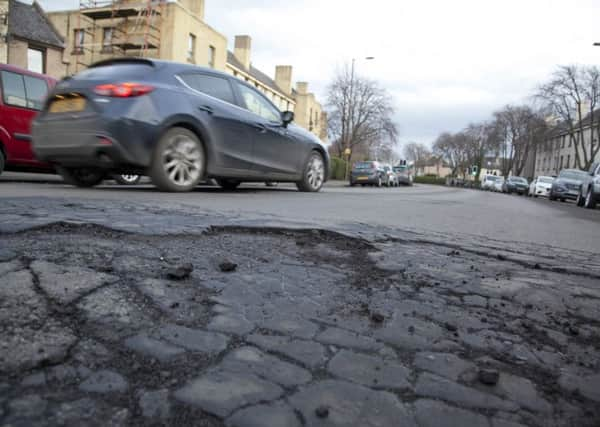Leader comment: 4-mile-deep potholes show danger of road repair cuts


No one should doubt the pressure that councillors are under to find ways to save money.
Swingeing cuts to council budgets – a real terms reduction of about £800 million in just seven years – mean they have had tough choices to make and our elected representatives have rightly focused on protecting education, child protection and social care.
Advertisement
Hide AdAdvertisement
Hide AdRoad maintenance is understandably lower down on the list of priorities, but eventually there comes a point where repeated lack of action to ensure our roads are kept in a fit state becomes a serious problem.
Motorists have a tendency to complain about potholes, so they risk being dismissed for crying wolf.
But when people start warning it’s only a matter of time before an accident is caused by the state of major roads like the A82, it’s clear this is a situation that’s starting to get out of hand. Regular drivers have got used to navigating through the patchwork of potholes, which now stretch to a combined depth of nearly four miles in Scotland. This need to weave about poses a problem for other road users, particularly more vulnerable ones like cyclists, who may not be anticipating the need for an unexpected manoeuvre. Cyclists can also find themselves in severe danger from deep potholes at the side of the road, when riding alongside vehicular traffic. Allowing roads to deteriorate will only mean higher repair costs in the long run and will also increase the amount of money councils have to pay out in compensation for accidents.
While accidents are the major concern, appearances also matter. In Edinburgh, the contrast between the wealth of its large companies and the shabbiness of its streets is becoming noticeable, and this may start to affect the impression of businesspeople and tourists visiting the city.
It’s hard to blame councillors who must try to balance spending priorities every year, but perhaps – under considerable pressure – they have lost sight of the longer term requirements to maintain the road network. So it might be time to try to think about a different system of funding road repairs to ensure they are carried out in a timely and cost-efficient manner, given this is a cost that must eventually be met. This would mean elected officials would no longer have to choose between looking after children or elderly people and fixing a few potholes, a dilemma that is only ever really going to produce one outcome.